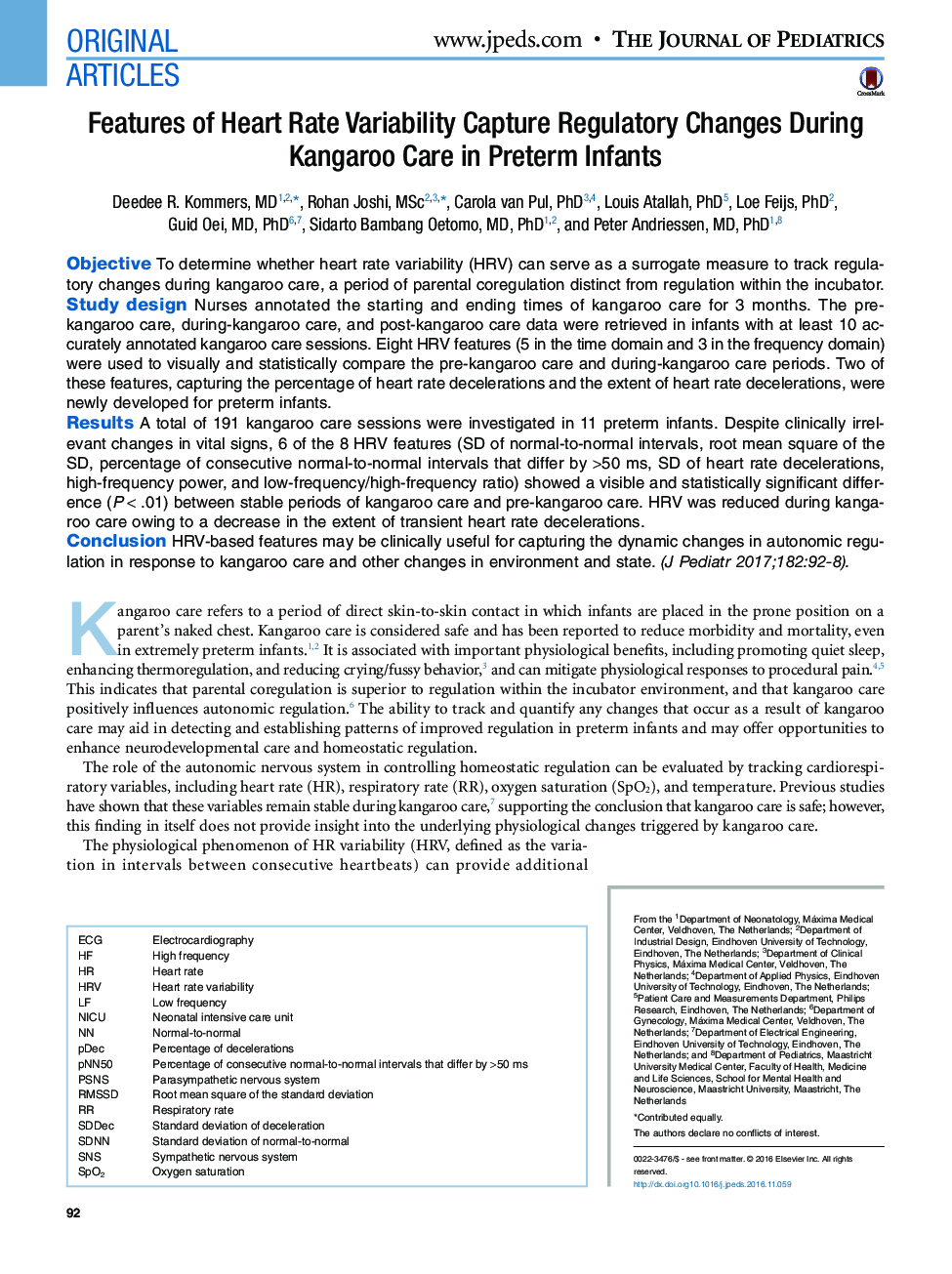| Article ID | Journal | Published Year | Pages | File Type |
|---|---|---|---|---|
| 5719658 | The Journal of Pediatrics | 2017 | 8 Pages |
ObjectiveTo determine whether heart rate variability (HRV) can serve as a surrogate measure to track regulatory changes during kangaroo care, a period of parental coregulation distinct from regulation within the incubator.Study designNurses annotated the starting and ending times of kangaroo care for 3 months. The pre-kangaroo care, during-kangaroo care, and post-kangaroo care data were retrieved in infants with at least 10 accurately annotated kangaroo care sessions. Eight HRV features (5 in the time domain and 3 in the frequency domain) were used to visually and statistically compare the pre-kangaroo care and during-kangaroo care periods. Two of these features, capturing the percentage of heart rate decelerations and the extent of heart rate decelerations, were newly developed for preterm infants.ResultsA total of 191 kangaroo care sessions were investigated in 11 preterm infants. Despite clinically irrelevant changes in vital signs, 6 of the 8 HRV features (SD of normal-to-normal intervals, root mean square of the SD, percentage of consecutive normal-to-normal intervals that differ by >50 ms, SD of heart rate decelerations, high-frequency power, and low-frequency/high-frequency ratio) showed a visible and statistically significant difference (Pâ<.01) between stable periods of kangaroo care and pre-kangaroo care. HRV was reduced during kangaroo care owing to a decrease in the extent of transient heart rate decelerations.ConclusionHRV-based features may be clinically useful for capturing the dynamic changes in autonomic regulation in response to kangaroo care and other changes in environment and state.
